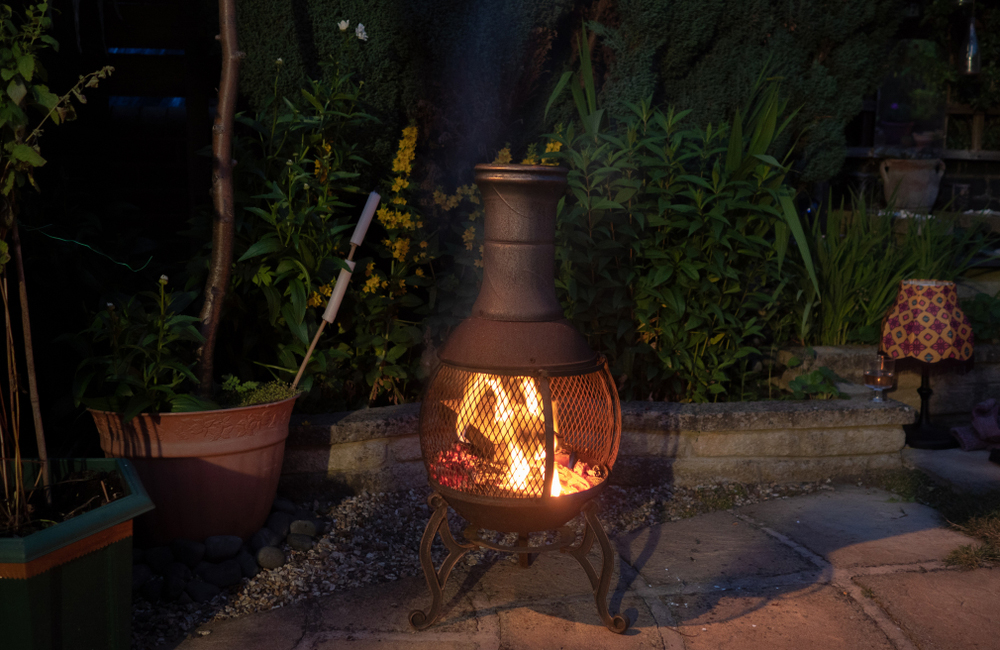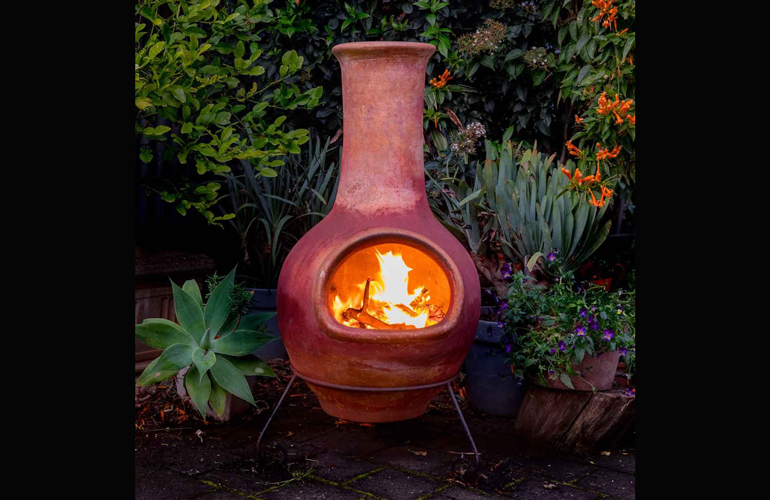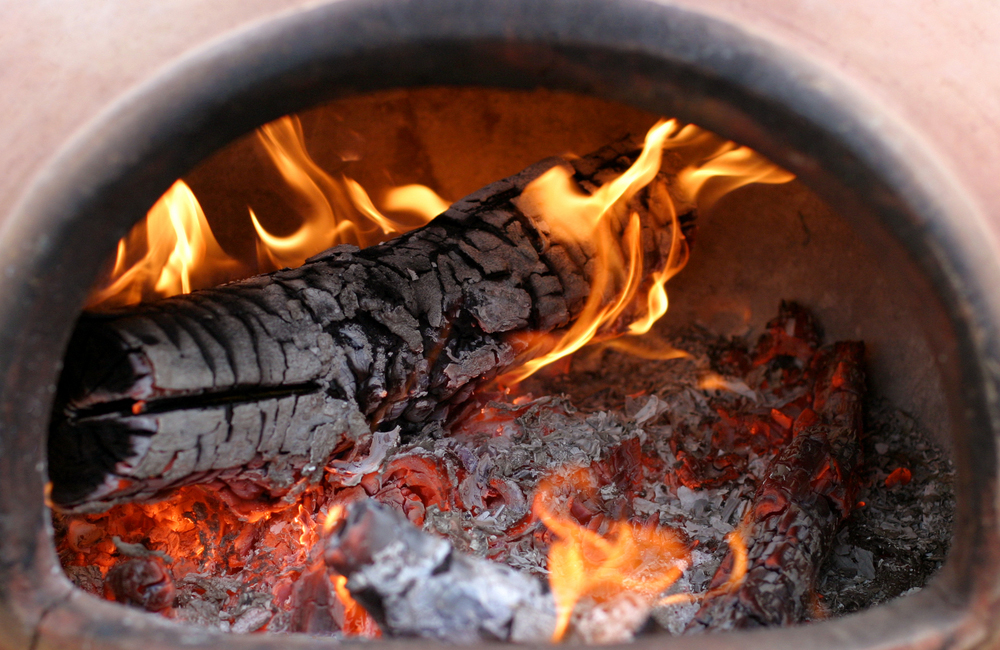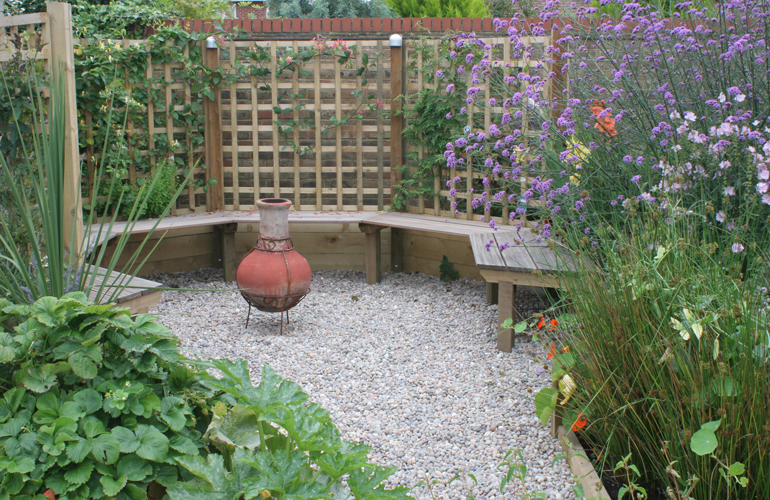What is a chiminea?

A chiminea is an outdoor stove, typically with a potbelly shape and a chimney. Chimineas originated in Mexico several hundred years ago, where they were often decorated with a colourful ceramic glaze and Mexican-inspired motifs. Chimineas are available in cast iron and cast aluminium, and terracotta clay, and are sold at garden stores and home improvement centres.
Everyone loves to sit around a fire, and a chiminea can provide an attractive, outdoor gathering spot in your backyard or patio, while its warmth can help you extend the months that you use your outdoor living spaces.
Learn more about outdoor heating options for your entertaining space.
Styles of chimineas

The chiminea has a wide, usually round opening for adding firewood, and sits on a metal base to raise it off the ground. Chimineas may have little to no exterior decoration, or have painted, incised and raised details. The classic chiminea has a round, squat “belly” topped by a wide chimney.
While most tend to have a traditional shape, there are modern styles available for those seeking a more contemporary look. Depending on the material the chiminea is made from, you might also find an open-mesh style.
What are chimineas made from?

Traditionally, chimineas are made of terracotta clay that may or may not be glazed. Because of the popularity of outdoor firepits, chimineas are now available in various materials, including cast iron, cast aluminium and steel. Of these, terracotta is by far the most prone to damage (see below), but it offers the classic, Mexican-inspired look. Metal chimineas are more resistant to damage, although cast iron chimineas are extremely heavy.



